- Sunday, 21 December 2025
Nepal starts exporting electricity to Bangladesh
Kathmandu, Nov. 16: In a significant development for regional energy cooperation, Nepal has officially begun exporting electricity to Bangladesh. The export of 40 megawatts of electricity produced in Nepal to Bangladesh began on Friday.
This marks a historic milestone in Nepal’s efforts to become a key energy exporter in South Asia, leveraging its abundant hydropower resources. Dipak Khadka, Minister for Energy Water Resources and Irrigation of Nepal, Manohar Lal, Minister for Power of India and Muhammad Fouzul Kabir Khan Advisor to Power Division, Ministry of Power, Energy and Minerals Resources of Bangladesh jointly inaugurated the electricity export virtually on Friday afternoon.
This is the first time the electricity produced in Nepal has been exported to a third country. Till now, Nepal has its power trade with only India. On October 3, 2024, a tripartite power sales agreement was signed between Nepal Electricity Authority, NTPC Vidyut Vyapar Nigam (NVVN), India, and Bangladesh Power Development Board (BPDB) to export 40 megawatts of electricity from Nepal to Bangladesh using the Indian grid.
The electricity produced in Nepal will reach the Muzaffarpur substation of India through the first cross-border Dhalkebar-Muzaffarpur 400 kV transmission line and from Muzaffarpur substation, the electricity will reach Bangladesh through Behrampur (India)-Bheramara (Bangladesh) 400 kV transmission line. The export of electricity from Nepal to Bangladesh via the Indian grid started at 12:30 noon on Friday for only 11:30 hours till midnight.
Electricity export to Bangladesh will resume from June 15, 2025, according to the NEA. Nepal will supply power to India and Bangladesh only in the rainy season. The Central Electricity Authority under the Ministry of Power of India on Thursday approved the export of 40 megawatts of electricity—18.60 MW generated from the Trishuli and 21.40 MW produced from Chilime hydropower projects to Bangladesh.
The Central Electricity Authority has approved the export of 40 megawatts of electricity produced from the two projects to Bangladesh until October 2, 2029. Both of these projects are approved to export power to India.
The NEA will sell 40 megawatts of electricity to Bangladesh for 6 months of the rainy season, starting from June 15 to November 15 of every year for five years. According to the NEA, the electricity trade between Nepal and Bangladesh will be in dollars.
The Authority will get 6.40 US cents per unit (Rs. 8.62 as per the foreign exchange regulation rate on Friday) by selling electricity to Bangladesh.
Nepal is about to earn in dollars for the first time by selling electricity. Electricity trade with India has been done in Indian rupees.
The NEA has received USD 28,160 (approximately Rs. 3,793,433) for exporting 40 MW of electricity to Bangladesh for 11.30 hours on Friday.
The Authority will get the price of electricity exported to Bangladesh at Muzaffarpur point in India. The NEA will bear the technical leakage of the transmission line from Dhalkebar to Muzaffarpur. After the Muzaffarpur point, Bangladesh will bear all the taxes and fees including the transmission line fee, leakage, NVVN and the trading margin taken by India.
Historic milestone
On the occasion, Minister Khadka said that the export of electricity from Nepal to Bangladesh was a historic milestone for Nepal.
“This milestone is a reflection of our shared vision for a sustainable and interconnected energy future in South Asia,” he said.
“This power trade is more than just electricity—it is a step toward energy security, economic growth and environmental sustainability for all our nations. It demonstrates our collective commitment to clean, reliable energy and a regional transition to renewable resources,” Minister Khadka added.
He thanked the government of India for facilitating the export of electricity to Bangladesh and the government of Bangladesh for importing electricity from Nepal.
Minister Manohar Lal said that the work of expanding electricity to South Asian countries by using India’s transmission line was commendable.
He said that India has invested in various hydropower projects in Nepal and the completion of these projects would further facilitate the expansion of the electricity trade.
He said that India was ready to help in the development of Nepal’s power generation. He said that such agreements would help for sustainable development of green energy.
Advisor Muhammad Fouzul Kabir Khan said that such agreements would greatly help regional energy security.
He said that such cooperation would enrich South Asian countries in integrated energy development and help in sustainable development.
He expressed his belief that Nepal’s hydropower would help Bangladesh, which has adopted a policy of reducing carbon emissions to zero, to go on the path of renewable energy and in its economic development.
Secretary at the Ministry of Energy, Water Resources and Irrigation Suresh Acharya said that the trilateral energy agreement and export would be remembered for a long time in the history of South Asia.
He said that this partnership is an important step towards realising our vision of becoming a leading exporter of renewable energy in the South Asian country.



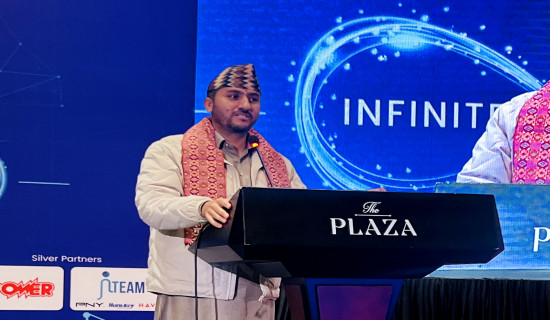
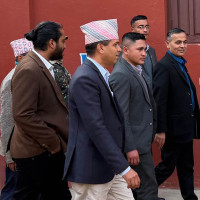
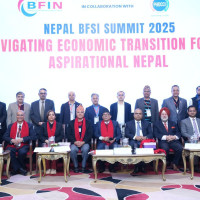
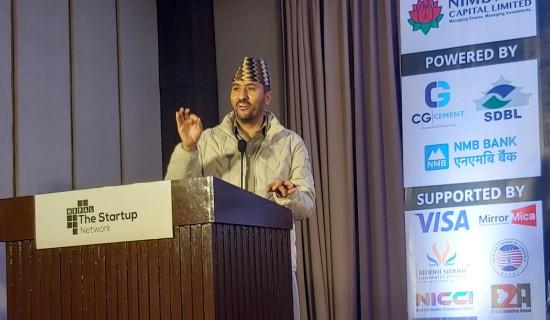
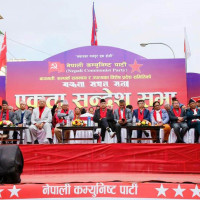






-original-thumb.jpg)

